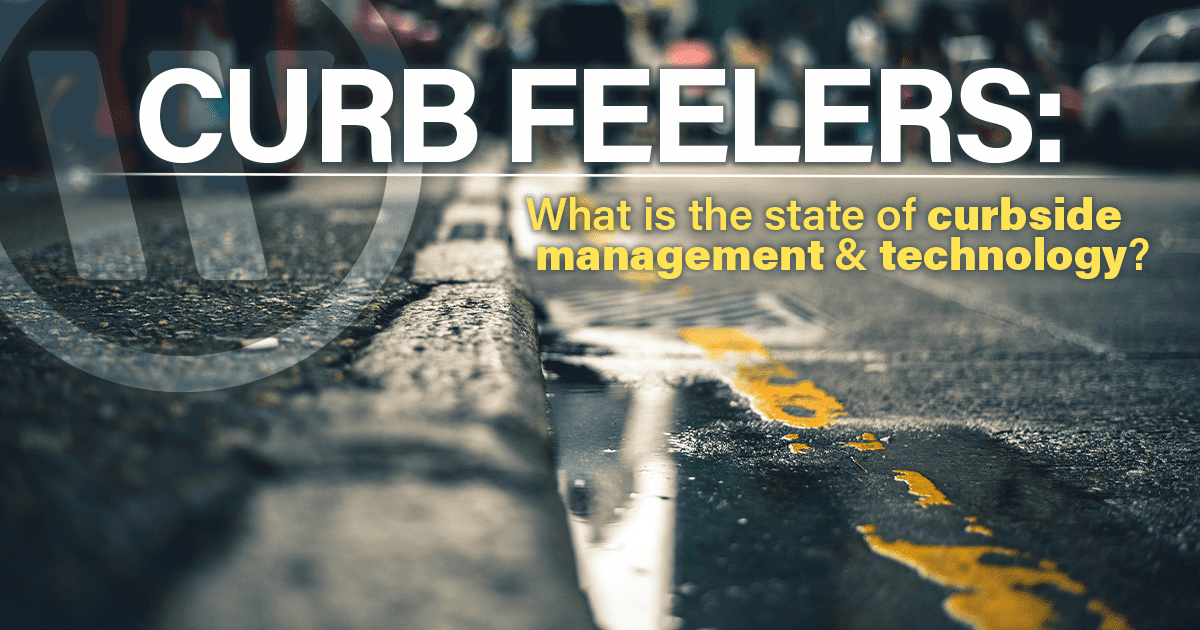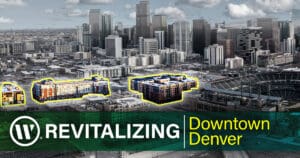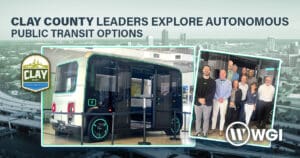In the realm of transportation, curbs have long been seen as mere boundaries separating roads from sidewalks.
However, with the increased competition for curb space, curbs are now a recognized infrastructure element in their own right. With growing attention to curbs, cities are looking for both near-term solutions and the longer-term ramifications of autonomous vehicles and delivery systems.
Near Term Needs
In the past, cities regulated curbs with on-street parking regulations, meters, and signs. Deliveries were often directed to alleys in urban areas or building loading zones. The explosion of online commerce, however, has overwhelmed the available loading facilities, with delivery drivers, now under time pressures, often choosing to double park and risk parking tickets rather than navigate alleys and loading docks.
But it’s not just delivery drivers vying for space. Drivers tend to value on-street parking over garages or periphery parking. Valet services and law enforcement also use curbside parking. And ride-hailing services such as Uber and Lyft have elevated conversations on curbs due to the wild west nature of pick-up and drop-off.
We’ve all seen the parking sign clutter where five (or more) signs are needed to allocate space, and transportation is not the only use. The pandemic has also demonstrated the pent-up demand for outdoor dining as a regular feature of downtowns.
Emerging Solutions
At WGI, we’ve helped several cities develop solutions using innovative planning, policy innovation design, and new technologies. One of the main changes is to view curbs as real estate that needs to respond dynamically to shifting demand throughout the day – and evening. Where there is high demand, cities can transition to performance-based planning. With a performance-based model, cities establish performance benchmarks. For parking, setting a goal of 85% occupancy is common. At this level, parking assets are well used though there are open spaces for new arrivals. If occupancy rises above the 85% target, managers use pricing or other methods to curb parking demand.
Another parking solution comes in the form of better use of periphery parking. Many cities don’t have a parking shortage, but rather, drivers are unaware of the location of open parking spaces. One of the most important uses of technology is real-time information on available parking. The trick is to not only post information at garage entrances but also make information known to drivers via navigation apps and bypass signage at the edge of downtown. In addition, on-demand and fixed route circulators are gaining popularity in downtowns and can be used to shuttle drivers and employees between periphery parking and destinations. Periphery parking may also provide more advantageous locations for charging facilities, given the lower level of activity.
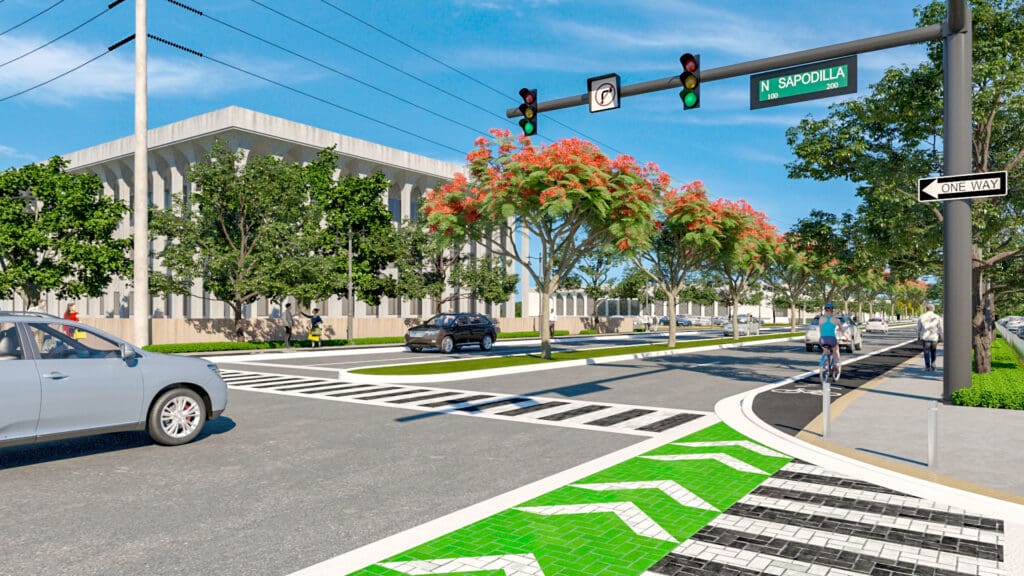
Bicycle lanes require space, whether shared with vehicles or physically separated from traffic. The recent infrastructure law boosted attention and funding for Complete Streets, which supports a balanced mode split among walking, biking, transit, and automobiles. As highlighted in this article, however, the definition of complete increasingly encompasses more than modes. WGI is currently working with the American Planning Association to update resources on Complete Streets and will include consideration of the multiplicity of demands in streets and along curbs.
Of note, handicap accessibility and parking need to be at the center of the design. The recent release of technical guidelines from the U.S. Access Board is called Public Right-of-Way Accessibility Guidelines (or PROWAG). These design rules implement the Americans with Disabilities Act (ADA), and issue required dimensions for facilities such as loading zones and parking spaces.
With new technologies, cities can also begin to manage curbs in real time. By instituting “programmable curbs,” cities can replace the complex and cluttered signs mentioned prior with signs that alert drivers to curb availability in real time. This type of system, as illustrated below, would use dynamic signs and paint to let drivers know which uses are available and at which price point. For example, a city can use data to find which hours have the highest delivery demand and allocate space accordingly.
What about Autonomous Vehicles and Curbs?
Five years ago, transportation industry reports were replete with articles on the imminent arrival of autonomous vehicles, including robotaxis and delivery bots. Given the complexity of vibrant urban streetscapes, the rollout has taken more time than expected. Even so, companies are iterating to learn from mistakes and improve the technology and software needed for services that rival or exceed those undertaken by human operators. Moreover, new automobiles in the United States currently offer “driver-assist” or semi-automated parking and maneuvering.
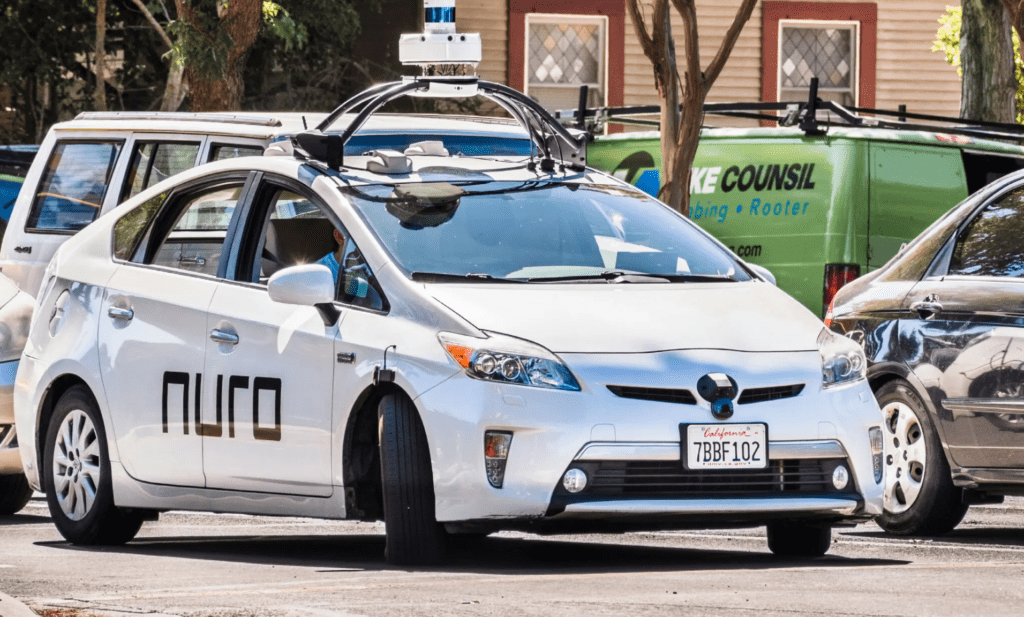
What is the status of automated delivery services? First – the goal of automated delivery services (ADS) is timely service without disrupting traffic or jeopardizing the safety of pedestrians, cyclists, and other road users. A new report from the standard-setting organization SAE titled “AVs and Infrastructure Enablers: Curbs and Curbside Management” provides insights. Lisa Nisenson, WGI’s VP for New Mobility & Connected Communities, contributed to this report. The report uniquely treats how AVs affect urban design, infrastructure, and public works. The following key points reflect this multi-disciplinary view:
- Not just restaurant deliveries: While restaurant and food delivery services have gathered the lion’s share of attention, cities are seeking novel applications for AVs to provide parking and bus lane enforcement, trash collection, and street sweeping.
- Precision is key: Parking and navigation systems rely on curbs for physical and digital guidance that is measured in millimeters. This is why self-driving systems are valued for maximizing curb productivity. As such, engineering and design will need to account for these new dimensions at a precise scale.
- Data drives performance – and operations: Professionals working with programmable curbs will need steady streams of data to assess supply, demand, curb utilization, conditions, and emergency situations. Just as parking apps now supply information on how and when parking spaces are used, operators will need to expand data collection to cover passenger pick-up and drop-off, delivery services, public works, transit, emergency responders, and vendors who use curbsides for outdoor dining and commerce. Once collected, cities will need expertise in integrating and analyzing diverse data sets from vehicles, sensors, cameras, and more.
- Challenges for both driverless and driven vehicles: While autonomous operations have a set of unique challenges and needs, good urban design generally applies universally. This includes the increased need for unobtrusive pick-up and drop-off points for goods and people. Accessibility applies no matter what. Enforcement is underappreciated for its role in traffic flow and optimizing curb productivity.
As we navigate the evolving landscape of mobility, recognizing the pivotal role of curbs is not just a necessity—it’s a pathway to transformative change in managing multi-use spaces. To purchase a copy of the report, please visit SAE’s website.
Contact Our Team
Download one of our whitepapers to learn more:
And contact our team today to discuss how we can apply our expertise to your next project!







